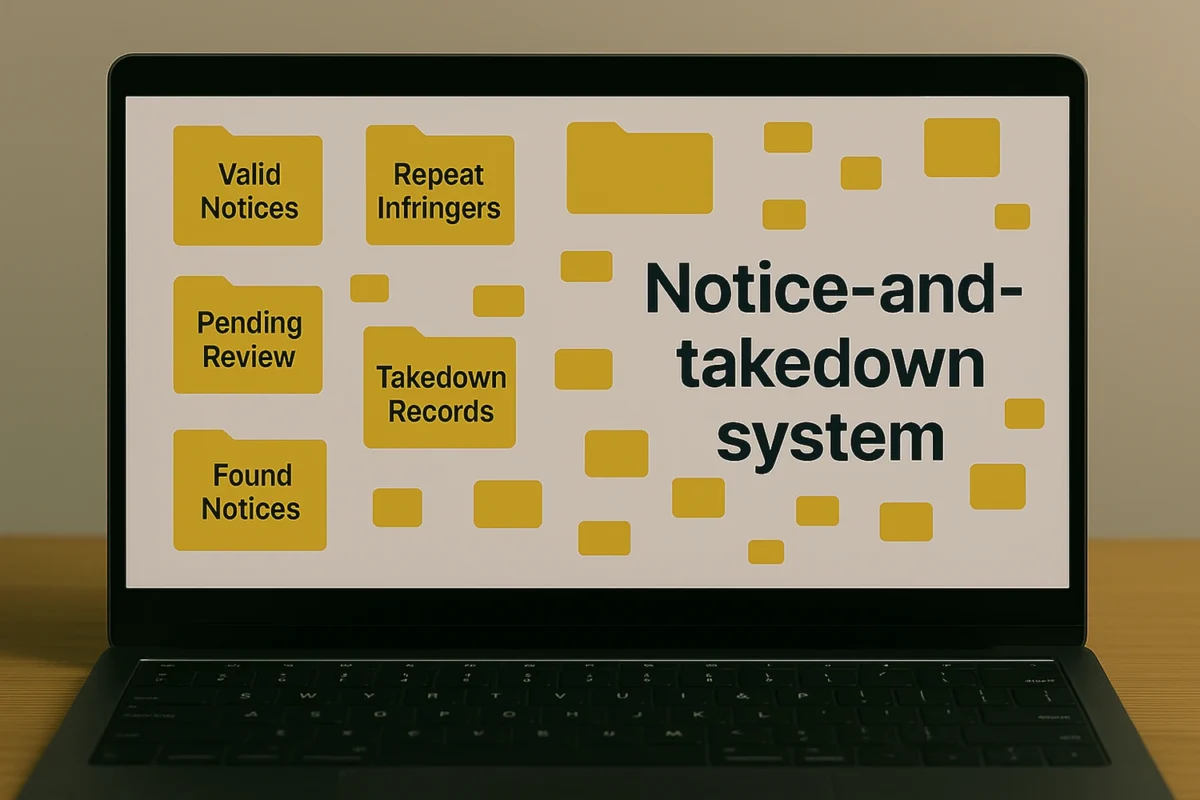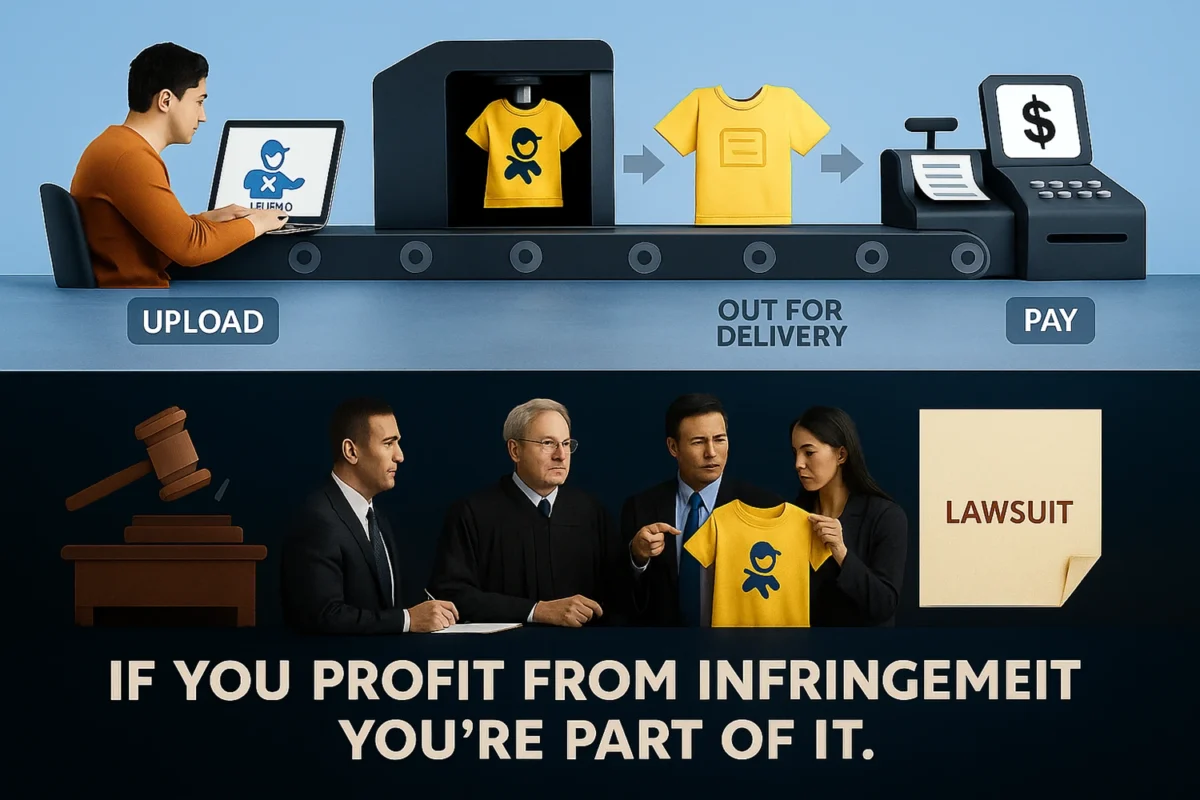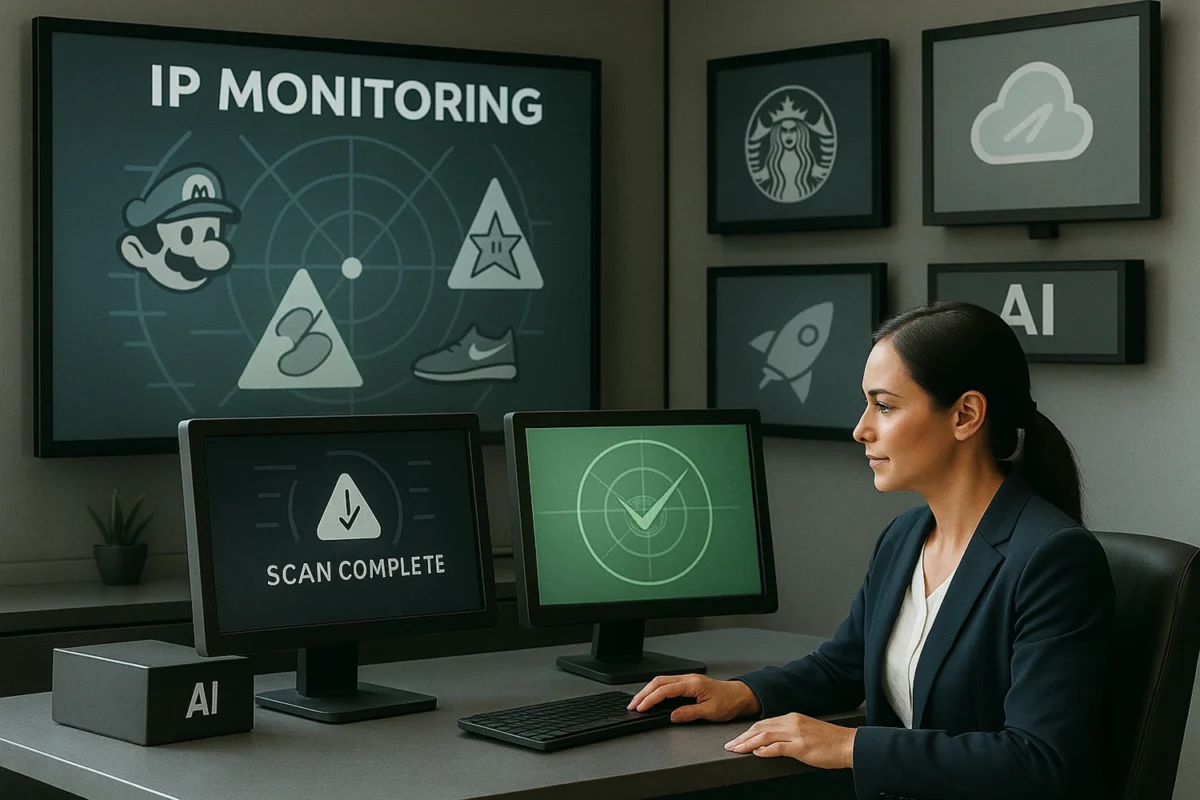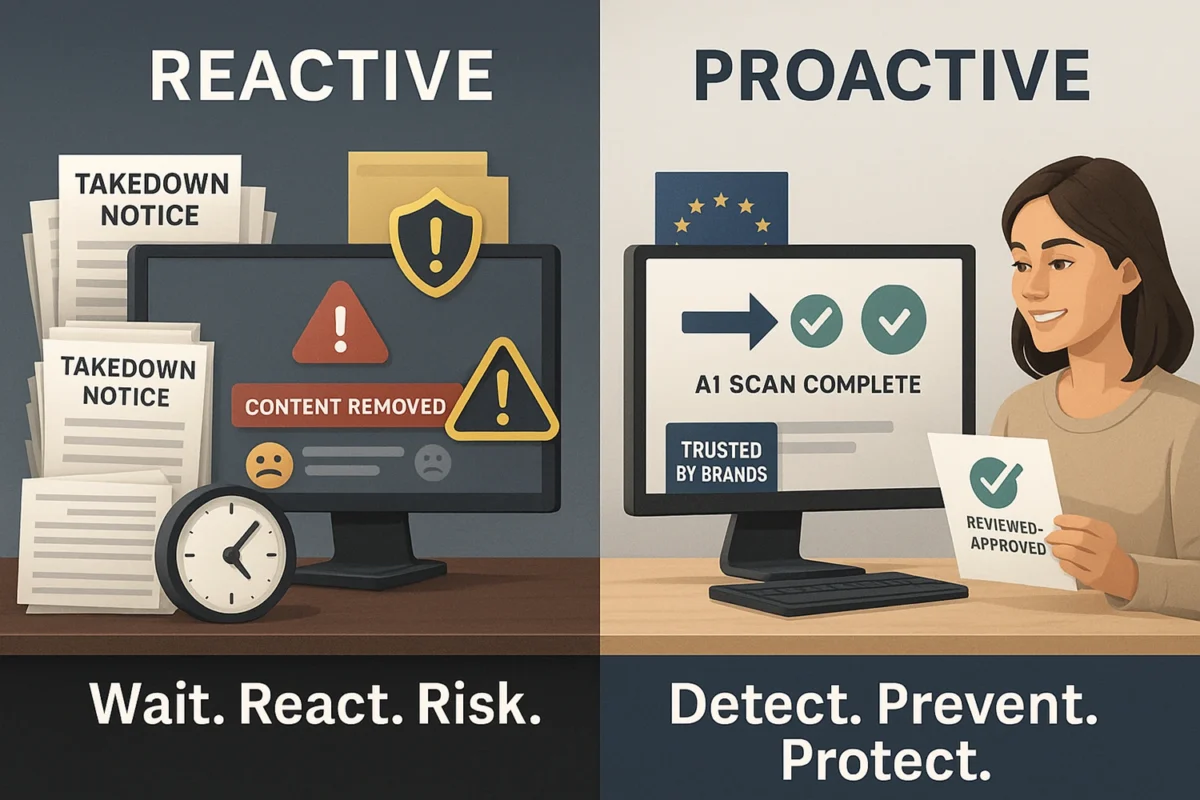Notice-And-Takedown Systems: Legal Requirements & Best Practices
For any platform that hosts user-generated content or allows creators to sell designs, an effective notice-and-takedown system is your first legal line of defense—and one of your biggest operational challenges.
Getting it right means maintaining Safe Harbor protections, earning trust with rights holders, and keeping your content ecosystem clean.
Getting it wrong? That could mean losing legal immunity, getting sued, or becoming a magnet for repeat infringers.
Here’s what every platform needs to know—and do—to build a legally compliant, scalable takedown system.
1. Legal Requirements: What The Law Demands
To be legally enforceable, a takedown notice must:
- Identify the specific work being infringed
- Include the exact location (URL or listing ID) of the allegedly infringing content
- Include the name and contact info of the complaining party
- Include a statement of good faith belief that the use is unauthorized
- Include a sworn declaration of accuracy under penalty of perjury
- Be signed (physically or digitally) by the copyright owner or agent
Incomplete or vague notices do not trigger your legal obligation to remove content.
2. Repeat Infringers: The Silent Dealbreaker
Platforms must adopt and enforce a repeat infringer policy—or risk losing Safe Harbor status. This means:
- Tracking users who receive multiple takedown notices
- Taking appropriate action, including warnings, suspensions, or permanent bans
- Having a defined threshold for what counts as “repeat” (e.g., 3 strikes in 6 months)
Simply saying you have a policy isn’t enough. You must enforce it—and be ready to show proof.
3. Best Practices for an Effective Takedown System
Even if you meet the legal minimum, a well-designed takedown system can save time, reduce friction, and demonstrate good faith to courts and rights holders.
Clear Reporting Channels
- Provide a dedicated IP complaint form or email
- Make your process easy to find and simple to complete
- List your DMCA agent publicly (and ensure they’re registered)
Transparent Process
- Send confirmation receipts when a complaint is received
- Notify the content uploader of the removal
- Offer a counter-notice option to dispute false claims
- Provide timelines (e.g., “Appeals reviewed within 10 business days”)
Internal Trigger Workflows
- Verify the notice meets legal standards
- Flag known bad actors or automated spam complaints
- Prioritize high-risk content or brands (e.g., Disney, Nike, etc.)
Document Everything
- Keep records of each notice, response, and outcome
- Track patterns to identify repeat infringers or policy abusers
- Archive communication for legal audits or takedown defense
Integrate Proactive Detection
- Use tools like Infringio to flag likely infringements before a notice arrives
- Reduce dependency on external complaints
- Show you’re taking proactive responsibility, not just reacting
Bonus Tip: Don’t Over-Enforce
Taking down too much content—especially from legitimate creators—can:
- Create frustration and churn
- Lead to negative brand sentiment
- Raise free speech or censorship concerns
Balance is key. A mix of automation + human review helps platforms get it right more often.
Compliance Starts with Process, Not Panic
A fast, fair, and legally sound takedown system isn’t just about avoiding lawsuits—it’s about maintaining trust with users, brands, and regulators. To do it right:
- Know what a valid takedown looks like
- Track and act on repeat violations
- Document everything
- Use smart tools like Infringio to stay one step ahead
Because when infringement hits, how you respond determines whether you’re protected—or exposed.
Want to modernize your takedown process and protect your platform? Want to see how Infringio helps detect IP issues before they go live? Book a demo with VISUA today.
Disclaimer: Not Legal Advice
This content is provided for informational purposes only and does not constitute legal or professional advice. The information reflects our understanding as of the date of publication and may not apply to every situation or jurisdiction. You should consult qualified legal counsel for advice tailored to your specific circumstances. Any actions taken based on this content are at your own risk. Neither VISUA nor its affiliates accept liability for any losses or damages arising from the use of this information.
Book A DemoRELATED
Redbubble, Teespring, and the Lessons of IP Enforcement Failures
Reading Time: 3 minutesPrint-on-demand (POD) platforms empower creators to design and sell products without holding inventory. But with that power…
BlogHow AI Is Changing the Game in IP Enforcement
Reading Time: 2 minutesIP enforcement used to be simple: But today’s infringement landscape – especially for POD and UGC-heavy platforms…
BlogThe Future of IP Compliance – Proactive vs. Reactive Models
Reading Time: 2 minutesFor years, most platforms treated IP compliance as a reactive function: But the market – and the…
Blog


